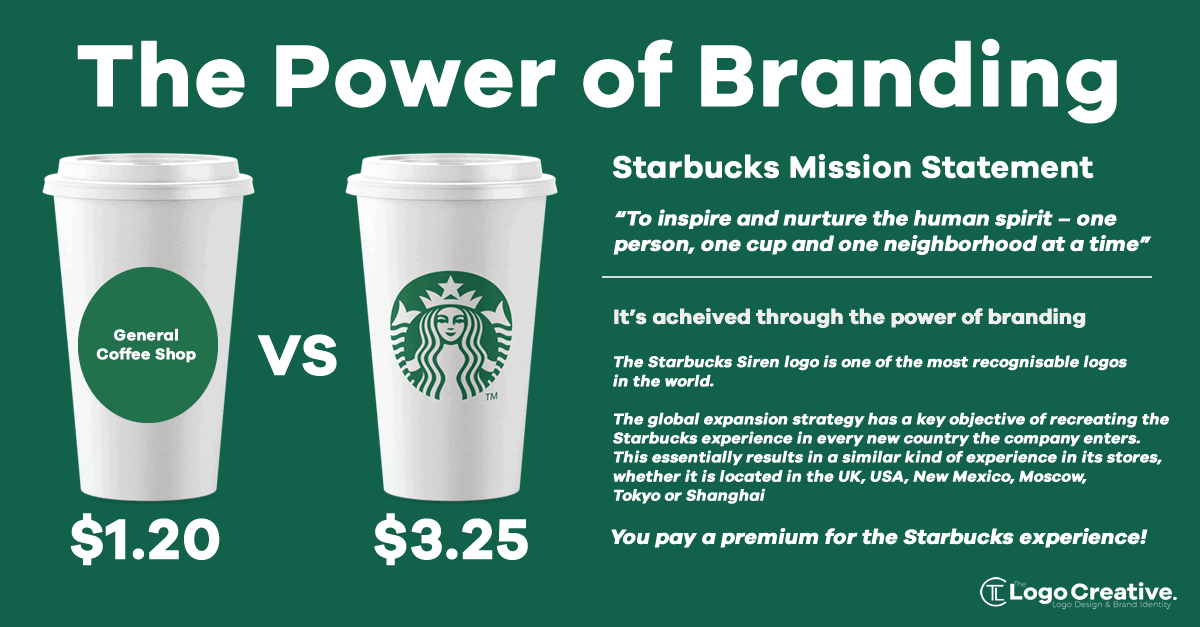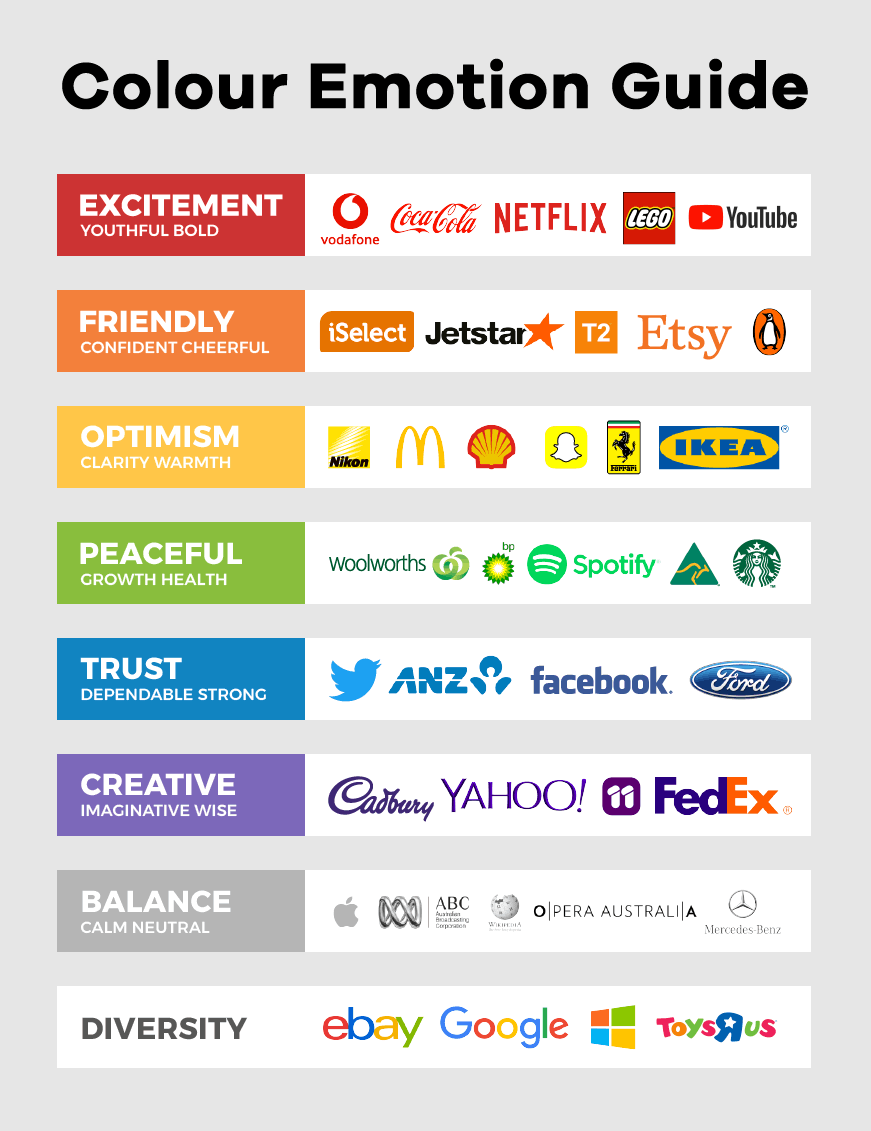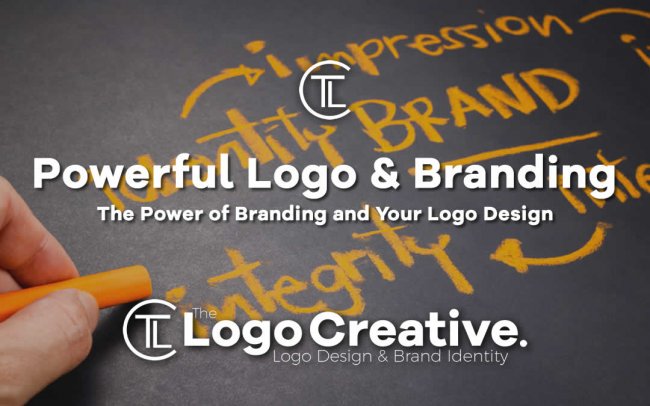We often think to ourselves, “How do these brands capture the attention of consumers?” and “How do they get these massive outcomes and so much love from their consumers?”, and the answer is that they deliver an impactful message using a strong visual identity. In this article, we discuss The Power of Branding and Your Logo Design.
A brand must leverage the influence of its logo design as the logo plays a far more significant role than most people perceive it to be. A strong logo design can leave a subconscious impact on the customer’s mind.
Modern-day business is more inclined to the idea of introducing products and services that communicate with the audience on a personal and emotional level. Brands achieve this level of communication by creating a meaningful logo design that represents what a brand stands for and shows its core values that communicate the right message within seconds instilling trust and that memorability factor.

Table of Contents
Branding
Branding is a well-known world all over the world and used in a wider context by people around the world. A brand is a set of associations that an audience makes with a service provider or product manufacturer. A brand can be a company, a person, or an organization.
The brand may be known and operate locally or internationally. An internationally recognized brand must actively be promoted and marketed through different means. The process of creating a unique name and attribute to a company through marketing, advertising, and promotions with a consistent brand voice is branding.
The purpose of branding is to instil and establish a unique identity and presence of a company and its name that attracts and retains customers. Branding is also essential for maintaining customer loyalty and retention.
A brand needs a consistent theme to place its name and identity in the bold letters in the audience’s mind. The vision and mission of the company should be defined.
In addition to this, the logo of a brand must align with the brand’s vision. The importance of a logo in branding is undeniable hence a logo needs to be a true representative of a brand to attract and engage audiences.
The Importance of Branding

Branding is a powerful tool to increase the overall sale of the company and retain customers through a strong image of a brand.
Branding makes your product unique and different from the competitors. It adds an enhanced value to the products due to a strong recognition in the market. The brand develops loyalty among the customers, and thus they are willing to pay more for their preferred brands.
Role of the Logo in Branding

A logo is a pictorial persona of a brand, and it is one of the most prominent elements for building a trustworthy relationship with the target audience. A good logo is one that is memorable, functional for conveying the brand message, and effective for building a suitable brand association. If your logo truly reflects the brand concept and value, it can help you become a priority brand choice in the market.
To become a memorable face, convey the brand message, a logo must include both conceptual and visual values. These values are the attributes of a logo which contribute to the brand image. If a logo is not easy to remember, it may not get registered in the memory and deteriorate one of the major purposes of a logo.
Similarly, if a logo doesn’t reflect truly on the brand image, despite the appropriate service offering, it might not be able to take its place in the users’ mind. In addition to this, a logo that is not capable of building an appropriate association of brand values might fail for the purpose of representing a brand.
For instance, a corporate company usually has a simpler and monochrome design while a paint manufacturing company usually has a colourful and vibrant logo design. If the situation gets reversed, both companies cannot truly represent their brand image. Hence, the logo must constitute custom attributes and features, depending on the nature of the brand.
Properties of a Good Logo Design
Simplicity in Logo Design
An important element of a logo is simplicity. To make the logo eye-catching and memorable, you to declutter your logo design. A lot of unnecessary design and use of colours may contribute to the unsteadiness and miscommunicated brand image. While creating a logo, it is suggested to keep your logo design simple and elegant as per your brand tone of voice.
It is recommended not to use more than colours in your logo because it makes it difficult to understand one strong message from the logo design.
However, some brands like Google, eBay, and Microsoft use multiple colours in their logo design to reflect the versatility and multiple ranges of services offered by the company.
Moreover, in monochromatic logo designs, the multiple hues can be used to enhance values and concepts accurately. In short, the choice and number of colours used in a logo must be following the brand voice and image.
Use of Shapes in Logos

Shapes are used in logos typically in two ways; one way is that it incorporates into the logo design directly while the other way they are used to confine the logo in a frame.
Different shapes represent different brand values in a logo design so, and a skilled logo designer may use these shapes to exhibit the unique image of a brand.
Edged shaped logos that include square or triangle suggest stability, firmness, strength, and uprightness of the associated brand. These shapes also represent efficiency, professionalism, and strength.
Circular shapes in a logo represent a community, relationship, continuity, stability, and endurance. Circular shapes are largely used in logo design because they have a wide range of messages and implications. Rings in the logo also suggest love, marriage, connection, games, and playfulness.
Triangular logo designs specifically suggest continuity, cycle, power, science, and logic. It’s also used to show balance and masculinity.
Use of Colours
The use of colours in logo design is an intricate process that requires the designer to choose colours wisely and carefully. Different colours depict different conceptual and visual messages so; a skilled designer’s job is to make a logo speak.

Red: colour denotes passion, energy, warmth, and aggression. Many food and sports companies incorporate this colour into their logo designs to show passion and energy. Popular examples include McDonald’s, Espn, and Coca-Cola.
Black: is used to youth and high-end audiences. It creates a mystery feel while representing a strong power presence, while also representing authority and elegance in a logo and brand as a whole. Good examples are Apple and the Nike swoosh. Here at The Logo Creative we also use black.
Blue: is a strong colour that is majorly used to represent a corporate identity, tech, business, professionalism, and reputability. Many popular brands use blue colour to convey their brand message strongly to the audience. IBM, Facebook, and Dell are popular examples of blue-coloured logo design.
Green: colour symbolizes serenity, nature, health, and earth. Many companies with the theme of nature and health use green colour in their logo design. Animal-planet, Subway, and Whole Foods are
Yellow: represents energy, warmth and life. Shell, McDonald’s, JB Hi-Fi, and Yellow pages are popular examples of yellow-coloured logos.
Purple: is a representative of creativity, insightfulness, and imagination. Cadbury, yahoo, and FedEx use purple colour in their logos to present their brand as intuitive and interesting.
Use of Negative Spaces

Blank space or background space in a logo can be utilized to express meaningful messages and brand image. Some of the very simple logo designs have strong messages through blank space.
FedEx logo is a classic example of using background space for conveying a message that enhances the brand’s voice. A spontaneous comes into existence by the amalgamation of E and X in the logo. This type of blank space message can also work for your logo by typing or illustrating your brand name in different fonts and typefaces.
In short, a logo contributes majorly to a brand building. It won’t be an exaggeration if we say that a big brand is formed with the right logo that truly reflects the brand’s vision and concept. A logo should have the right amount of colours, shapes and imaginative concepts to empower product branding.
We hope this article about The Power of Branding and Your Logo Design has been interesting, so be sure to check out Fabian Geyrhalter‘s new and fantastic Brand Strategy Framework course that you can re-use and apply within your our company.
Useful Links & Great Deals
- The Equipment We Use & Recommend
- Quality Design Bundles
- Get 2 Months free Skillshare
- Get an Exclusive 20% off Logo Package Express
- Learn Logo Design Online
Author Bio
Zubair Hassan is a digital enthusiast who loves to write on various trends, including Tech, Software Development, AI, Design, and Personal Development. He is a passionate blogger and loves to read and write. He currently works at AppVerticals, a Mobile App Development Company in Dallas.


